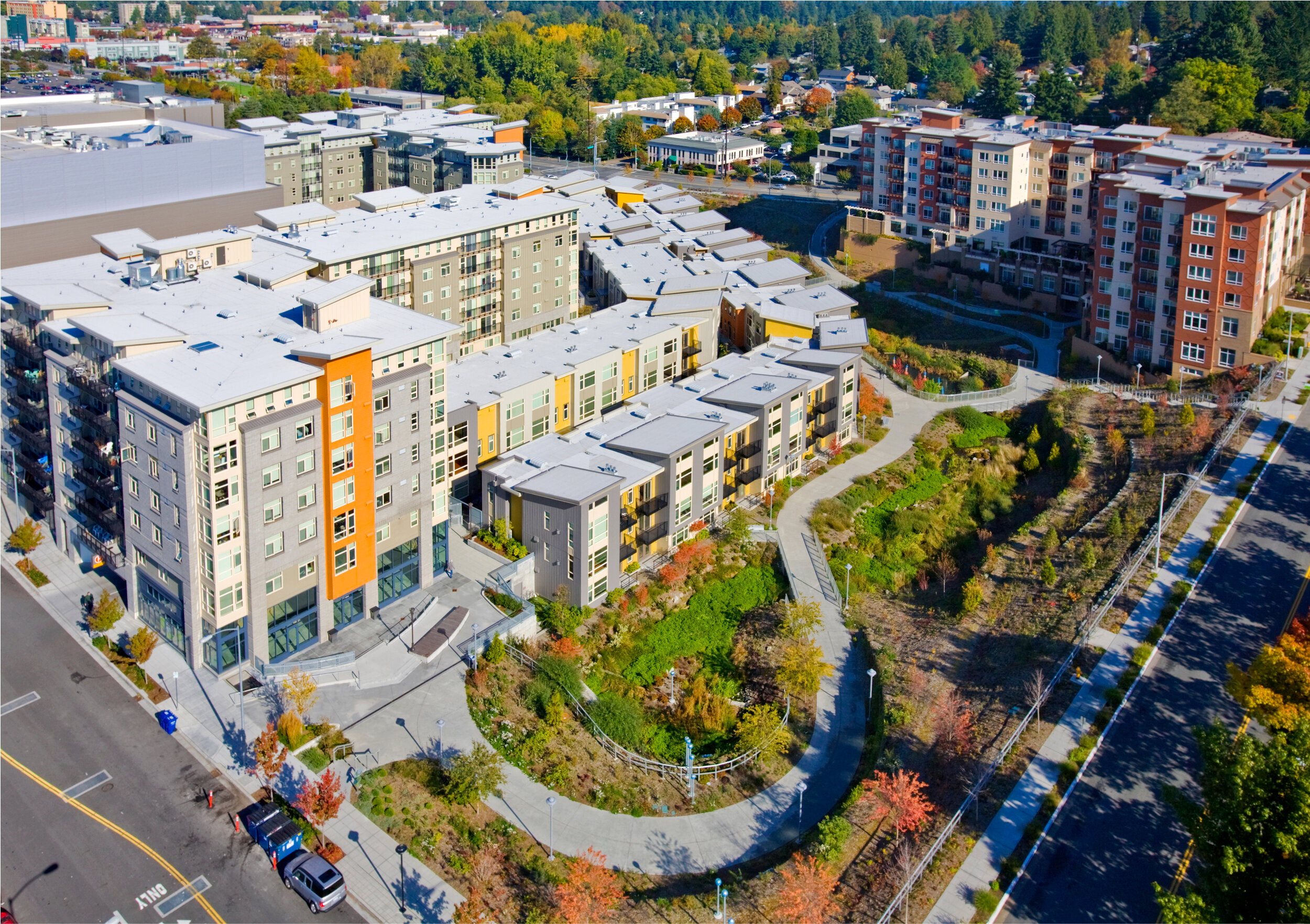Thornton Creek
Location: Seattle, WA
Length: 800 feet
Cost: $14.7M
Year: 2009
A surface parking lot is transformed into a vibrant urban park with a restored creek, trails, art, and surrounding development. Efforts achieved water quality improvements, while creating diverse wildlife habitat.
A surface parking lot, adjacent to a suburban-style mall, in Seattle’s Northgate neighborhood sat empty for much of the year. In the 1950s, construction of the 5-acre lot filled-in and culverted a headwater stream of Thornton Creek. Revitalization initiatives highlighted this area due to its adjacency to a regional transit hub. Urban runoff was increasing sediment loads and degrading water quality in downstream Thornton Creek.
From 2006 to 2009, a diverse stakeholder group met to forge a collaborative pathway towards achieving community goals of improved water quality and commercial development. In 2009, construction began on the Thornton Creek Water Quality Channel. The facility uses a series of swales and pools to slow and treat stormwater flows from the adjacent 680-acre drainage. Sediments and pollutants are settled out of the stormwater and retained by wetland vegetation, which provides habitat for birds, insects, and other wildlife. The facility will achieve a 40 to 80 percent removal of total suspend solids (sediments and pollutants).
“What was once a sterile, paved parking lot is now a unique urban park, complete with trails, bridges, plazas, and art.”
Surrounding commercial and residential development blends into the public open space. Pathways weave through the project. Interpretive signs and “Surge,” a placmaking art piece by local artist Benson Shaw that includes sculptures, bridge accents, lighted glass beads, and blue-lighted walls, creates a unique 2.7-acre green space in the heart of an urban neighborhood. The project is believed to have generated over $200 million in adjacent private development.
Goals
(1) Improving the water quality of flows entering Thornton Creek by removing sediments and associated pollutants from 91 percent of the annual runoff from the 680-acre drainage area;
(2) Providing public open space and native vegetation; and
(3) Facilitating economic development within the Northgate area by integrating the Project’s design with adjacent private development.
Sources
City of Seattle, Thornton Creek Water Quality Channel Final Report (2009)






